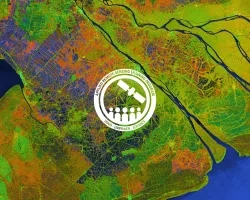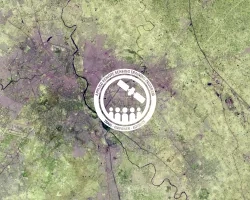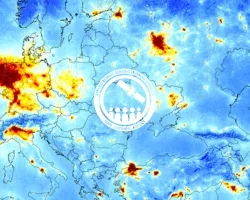Description
Frozen water on or below the earth’s surface, known as the cryosphere, is a vital component of the Earth system and includes snow, glaciers, ice sheets, sea ice, and permafrost. Approximately 75% of the Earth's total freshwater is stored in glaciers, ice sheets, and permafrost (USGS). In many regions, snowmelt also serves as a major source of freshwater. Snow and ice play a crucial role by influencing albedo (the fraction of sunlight reflected back into space) which affects the Earth’s energy balance and temperature. Snow cover also significantly influences weather patterns, ecosystems, transportation, recreational activities, and infrastructure (NSIDC). Mountain snowpack can lead to avalanches, and the timing and volume of melt can trigger flooding in snow-fed rivers. Conversely, reduced snowpack can result in snow droughts, impacting water availability.
NASA provides regional and global snow and ice data products based on remote sensing observations. Additionally, NASA Earth system models can diagnose snowfall during winter and estimate snow water equivalent—a key parameter for assessing freshwater resources. This collaborative training between ARSET, NASA’s National Snow and Ice Data Center, and NASA's Western Water Actions Office (WWAO), introduces NASA’s snow and ice data products and snow water equivalence data, with a particular focus on snow data application to monitoring and forecasting snow-fed river flow and water availability.
Register (Session A) 11:00-12:30 EDT (UTC-4)
By the end of this training, attendees will be able to:
- Recognize the importance and applications of snow data and Snow Water Equivalent (SWE) in monitoring water availability in snow-fed rivers.
- Identify NASA snow and ice data products and their applications for water resource management and disaster monitoring.
- Access and visualize snow and ice data products using NASA webtools for water supply prediction.
- Compare how snow data across platforms are utilized in water resources management and monitoring snow-fed river flow.
- Primary Target Audience: Regional, state, and federal water resources managers, river network and disasters managers, fish and wildlife managers
- Secondary Target Audience: Academic students and faculty
- Three 90-minute parts, each including a 30-minute Q&A session.
ARSET Trainers: Amita Mehta
Guest Instructors: Andy Barrett, Diane Fritz, Walt Meier, Ryan Theurer
- Recognize the impacts of snow and ice parameters to water resources applications.
- Identify NASA snow and ice data products and their applications for water resource management and disaster monitoring.
- Identify snow and ice data parameters and their characteristics.
- Explore examples of applications of snow and ice data for water resource management.
Materials:
ARSET Trainers: Amita Mehta
Guest Instructors: Saber Brasher, Mikala Beig, Andy Barrett, Diane Fritz
- Search and access NASA snow and ice data products.
- Recognize ways to analyze and visualize snow and ice data products.
- Compare coincident snow data across in-situ, airborne, and satellite platforms from NASA's SnowEx, ASO, and MODIS data sets.
Materials:
Part 3 of this Training is a Joint ARSET–NASA Western Water Actions Office (WWAO) Session.
ARSET Trainers: Amita Mehta
Guest Instructors: Karl Rittger, Sean Fleming
- Recognize the importance of water resources and impact of snow data in the Western US.
- Identify methods to monitor and visualize snow cover, snow albedo, snow darkening, and snow cover duration in the Western US.
- Recognize how the snow data are utilized in water resources management and forecasting snow-fed river flow with case studies in the Western US.
Materials
- Part 3 Presentation Slides (PDF, 8.5MB)
- Part 3 Q&A Transcript
- Homework (Due August 21)



